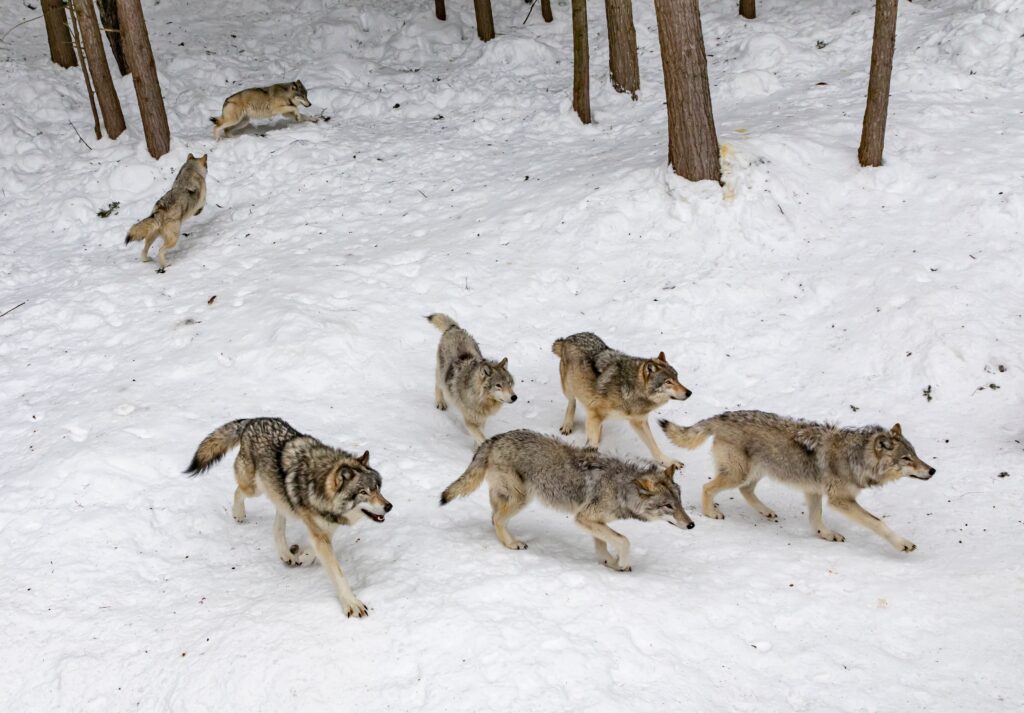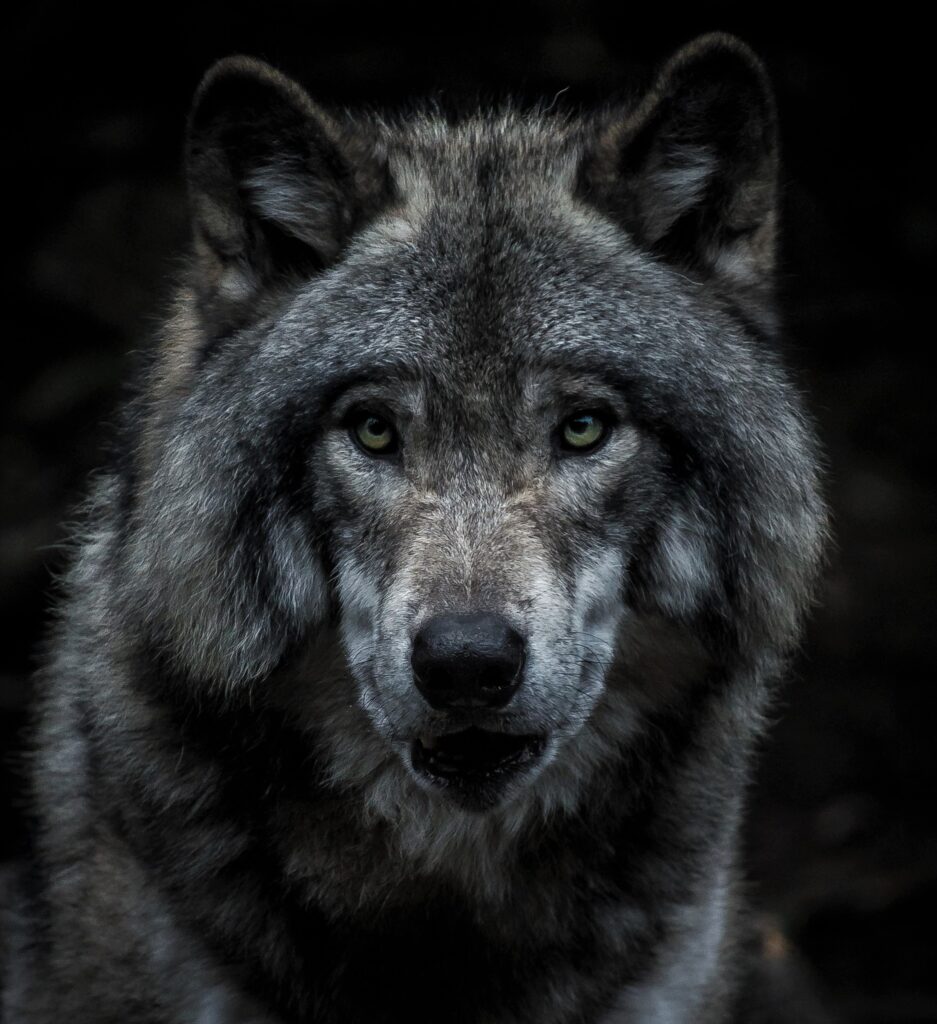The two places I have called home are at pivotal points in restoring gray wolf populations. As gray wolves are on the ballot in Colorado this November, Wisconsin wolf populations are threatened with the consideration of removing them from the endangered species list.
When I petitioned to get wolves on the Colorado ballot in 2020, it was clear that a certain percentage of people detested wolves, but they couldn’t say why. Others were indifferent to their struggle. When I started a conversation, offering facts about the benefits of gray wolves to our ecosystem, many people changed their minds and signed the petition.
The general public needs to shed their false beliefs that wolves are dangerous to other wildlife, humans, and livestock. The species, like so many others, is a delicate part of our ecosystem in the United States. The Yellowstone wolves are a prime example of this, having helped to restore rivers, flora, and fauna, and allowing other animals, such as the beaver, to flourish.
The gray wolf is widely misunderstood. Humans have devastated wolf populations since European colonization, and those numbers have only very recently been recovered, if just a bit. Wolves used to roam the United States in numbers up to 450,000 (Colorado Wolf & Wildlife). Now there are just a couple of thousand. That pales in comparison to their former numbers, and, in my opinion, still merits extreme protections.

Here are a few crucial things to consider:
- Wolves are not a threat to livestock, as some may claim. Predators only account for 0.23% of livestock deaths (WildEarth Guardians). By killing off elder wolves that teach young wolves what to hunt, we are only increasing the possibility of young wolves attacking livestock (The Wisdom of Wolves). Wolves are much smarter than we think. Their brain capacity is much larger than domesticated dogs and comparable to that of a 5-year-old human’s. They are truly remarkable creatures.
Older wolves and alphas are often the first wolves that are killed by hunters, as they are the most likely to investigate danger. Hunting is a learned behavior in wolves. Without elders to teach younger wolves how and what to hunt, those traits die off. Killing even one wolf in a delicate pack structure can threaten the livelihood of the entire pack.
In the book, The Wisdom of Wolves, the author notes that the wolves they observed didn’t even touch a dead steer that was donated to the monitored pack. They were unfamiliar with it, and therefore uninterested (The Wisdom of Wolves). Ranchers have noted wolves wandering around their cattle uninterested, only to pursue deer that were amongst the cattle grazing, which leads me to my next point.

2. Wolves are not only great to keep ungulate (deer, elk, moose) populations in check, they are overall great for an ecosystem. They move grazing animals along and help plants, water, and other species in the area. See Yellowstone’s wolf reintroduction study: https://www.youtube.com/watch?v=ysa5OBhXz-Q.
Without the gray wolf to keep coyotes in check in Colorado, they have been wreaking havoc on other threatened species like the kit fox. The kit fox, along with many other species in Colorado, would benefit greatly from the gray wolf’s reintroduction and the restoration of the natural balance that once existed in our ecosystem prior to human intervention.
3. Wolves are much more similar to humans than we think. Most myths about wolves are engrained culturally and entirely untrue. It is thought that the “fear of wolves” started from Grimm’s fairytales and has stuck since then. In fact, there have been ZERO reported human deaths from wolves in the U.S.’s lower 48 states (Colorado Wolf and Wildlife).
Wolves are pack animals. They are one of the only predatory species that care for other’s young. If a male takes over the pack, instead of committing infanticide like some predatory animals (i.e. lions, great apes), they care for the young as their own. “Fun uncles” and aunts even appear with their own personalities, some dragging found items like buffalo skulls for miles only to present the prize as a toy for the pups to play (The Wisdom of Wolves).
Our relationship with wolves was thought to have started as a mutually-beneficial hunting partnership. Wolves and dogs are some of the only other animals with whites on the outside of our eyes. Though canine’s are smaller and harder to see, they still exist, which makes us able to communicate with just a look. It is thought that humans and wolves were able to hunt together by reading each other’s facial expressions (The Wisdom of Wolves).
We once had a symbiotic, mutually beneficial relationship. We once respected wolves and nature, and, unfortunately, we have neglected our responsibility to the natural world. Through our treatment of wolves now and in the future, The United States has the opportunity to set a positive example for the future of our planet and the creatures with which we share our land.

References:
Colorado Wolf & Wildlife Center. 18 June. 2019. Tour.
“Gray Wolf.” Defenders of Wildlife, defenders.org/wildlife/gray-wolf
“Livestock Losses.” WildEarth Guardians, wildearthguardians.org/historical-archive/livestock-losses/.
“Red Wolf.” U.S. Fish & Wildlife Service, www.fws.gov/southeast/wildlife/mammals/red-wolf/.
Sustainable Human – “How Wolves Change Rivers.” YouTube, YouTube, 13 Feb. 2014, www.youtube.com/watch?v=ysa5OBhXz-Q.
Wikipedia contributors. “Big Bad Wolf.” Wikipedia, The Free Encyclopedia. Wikipedia, The Free Encyclopedia, 5 Jun. 2019. Web. 24 Jun. 2019.
